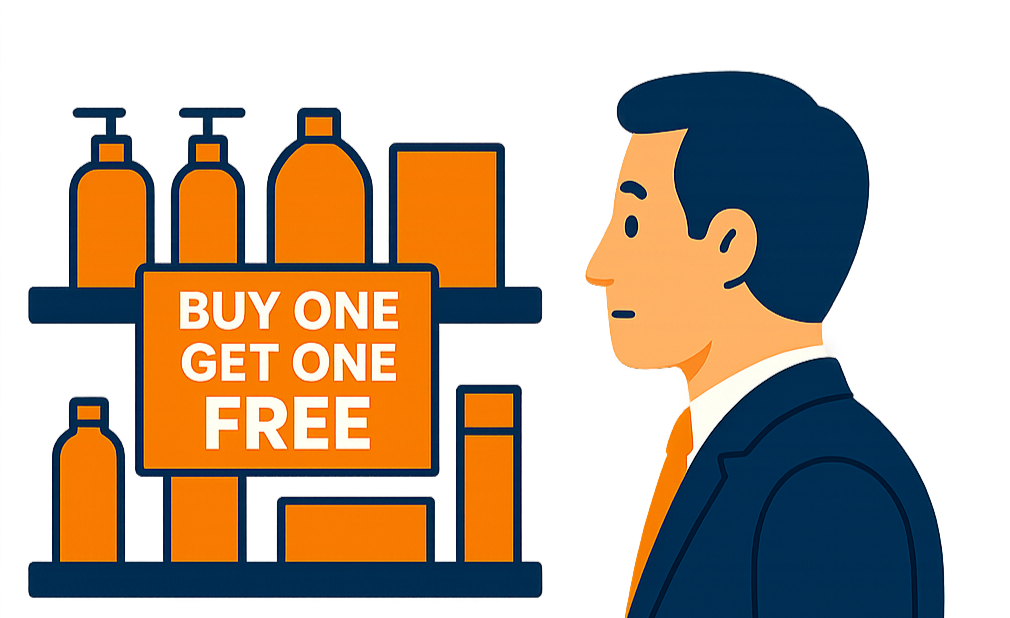For years, the answer to whether price was the key to conversion was an easy yes. Open a comparison tab, go a little lower, and win the sale. In 2025, the story is more complicated. Price still matters a lot, but it no longer wins on its own. Shoppers now weigh total value, not just the number on the product page. The brands gaining ground are those that balance sharp pricing with service, speed, and trust.
Price Still Leads, But It Shares the Stage
Economic pressure has kept price sensitivity high, especially on everyday items and branded comparables. Shoppers still check competitors before they buy, but the definition of price has changed. Customers now consider the total landed cost, which includes shipping fees, delivery speed, returns friction, warranty cover, loyalty rewards, and even payment options. A product that looks cheapest at first glance can lose the sale on the basket page once delivery charges or longer lead times appear.
Two ideas shape how customers interpret price: price perception and price fairness. Price perception is built on the few products shoppers use to benchmark you. If you are competitive on those key items, customers will give you permission to earn margin elsewhere. Price fairness is the sense that what you charge aligns with quality, service, and availability. Surprise fees or inconsistent pricing quickly erode that trust and harm repeat purchase.
The New Contenders for the Top Spot
Several factors now rival price as key decision drivers in ecommerce. Speed and certainty. Reliable delivery windows and accurate stock status often win over the lowest price. Clear communication converts better than vague promises. Frictionless experience. Simple checkout, stored preferences, easy returns, and fast support remove decision friction. Shoppers increasingly value time as much as money. Assortment and availability. Being in stock on the right variants is more powerful than undercutting competitors on the wrong ones. Depth of range and exclusives shift attention from “cheapest” to “best fit.” Trust and proof. Ratings, customer content, and brand reputation help de-risk the purchase. Many shoppers will pay more when they believe issues will be handled quickly and fairly. Membership and loyalty value. Benefits like free returns, credit options, and member-only pricing reshape the equation from a single transaction to ongoing value. Sustainability and ethics. Transparency, repairability, and responsible sourcing are now part of perceived value for certain categories and demographics.
Promotions Are Changing Too
Constant discounting no longer delivers lasting results. Perpetual promotions train customers to wait and dilute brand equity. The winning approach in 2025 is promotional precision. Targeted windows, clear mechanics, and aligned stock positions outperform blanket cuts. Price without context burns margin. Price timed against competitor stockouts or demand peaks creates lift without entering a race to the bottom.
Marketplaces Raise the Bar
Marketplaces have made comparison effortless, which has raised expectations everywhere else. Shoppers now expect consistent prices, delivery, and returns whether they buy on your site or through a marketplace. Misalignment between channels erodes trust quickly. Consistency across both price and experience is now essential to maintaining brand credibility.
Where Pricing Is Headed
Personalised pricing will evolve into personalised value. Rather than unpredictable price shifts, retailers will offer segmented incentives, loyalty tiers, and curated bundles that feel fair and transparent. Dynamic pricing will remain important, but it will be guided by stronger rules for fairness, brand alignment, and compliance. The most effective pricing teams will pair automation with human judgment to control both speed and intent. Accuracy and agility will decide who wins. Teams cannot be customer-centric with stale data or slow manual processes. The leaders will be those who see the full market picture, trust their data, and act in hours rather than days.
How to Compete When Price Is Not the Only Lever
Define your price image SKUs. Identify the products that shape your perceived competitiveness and hold tight on them. Use your long tail and differentiated items to recover margin. Measure total landed value. Track conversion and returns against price, shipping, and delivery speed. Small improvements in experience often outperform a price cut. Use stock and promotion intelligence. If competitors are out of stock, you do not need to match their last price. If they are discounting with limited availability, hold your value and lead on service. Segment your pricing strategy. Different customer groups value different things. Align offers to their needs and keep the logic transparent. Automate the routine and elevate the exceptions. Automation can manage guardrails, rules, and market follows so your team focuses on campaigns and category strategy instead of spreadsheets. Tighten data quality. Capture competitor prices, promotions, and stock status at a frequency that matches your market pace. Validate matches and monitor anomalies before they affect decisions. Align pricing with brand position. If your brand stands for reliability and service, your pricing should reinforce that. If you compete on value, make that value unmistakable across the basket and delivery experience.
So, Is Price Still Number One?
Price is still the entry ticket. It earns you a place in the consideration set, but it does not close the sale by itself. In 2025, the strongest retailers win on price where it matters and win on value everywhere else. They make pricing fast, fair, and context-aware. They connect pricing with availability, experience, and loyalty so the whole offer works harder than the number alone.
The takeaway is simple. Treat price as a strategic signal, not a standalone tactic. Build accuracy and agility into your pricing operations. Use visibility to act with confidence. And design total value that keeps customers choosing you, even when someone else is a pound cheaper.
Ready To Achieve Pricing Excellence?
Unlock smarter, faster pricing decisions. Download the Fast Track to Retail Pricing Excellence whitepaper today.



